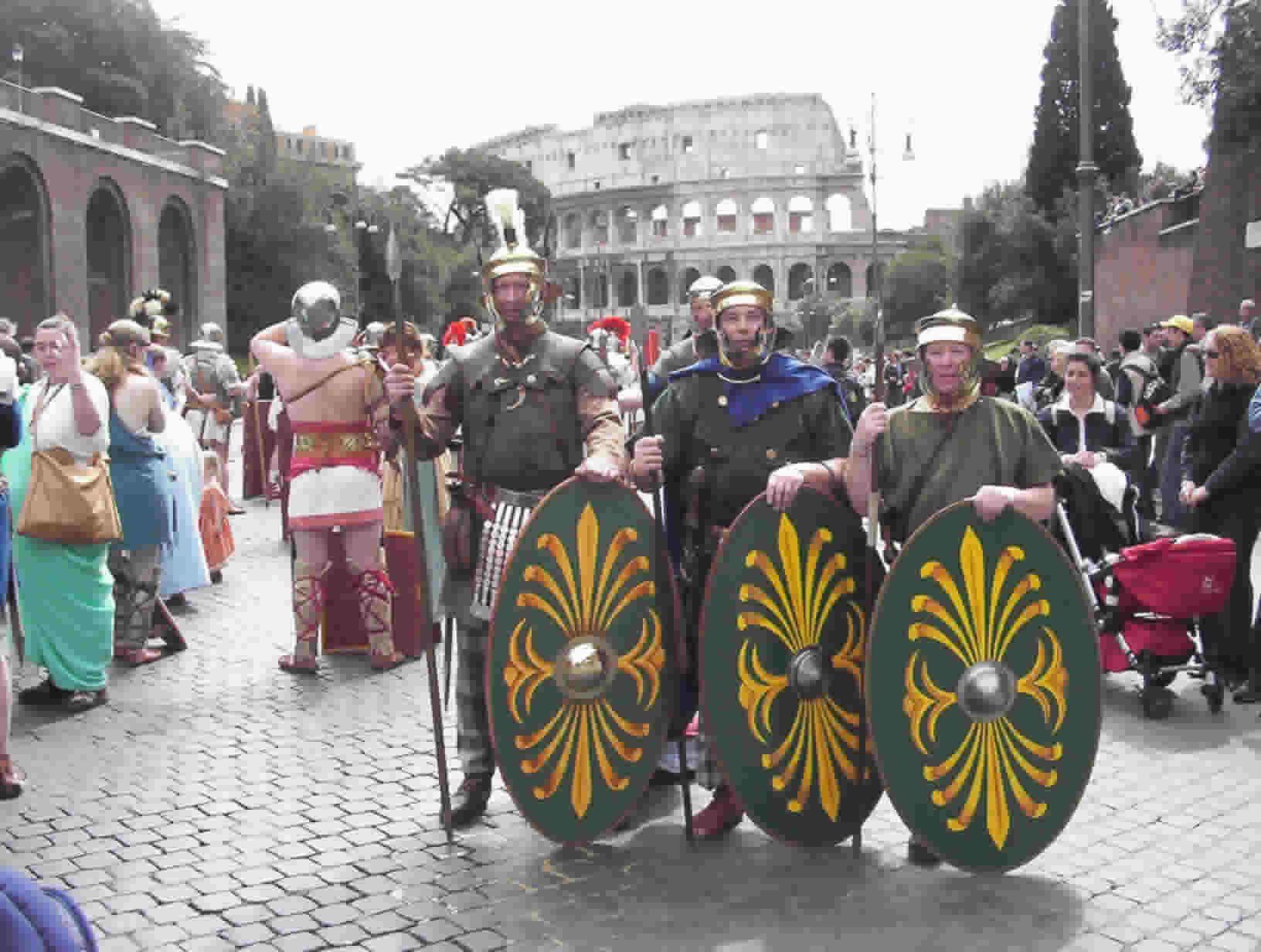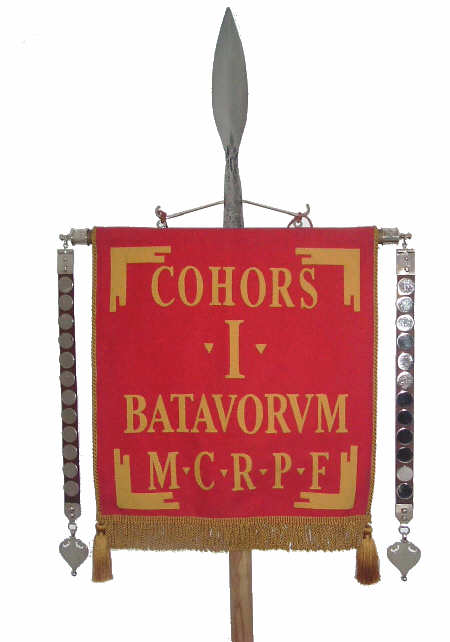
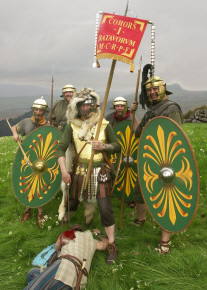
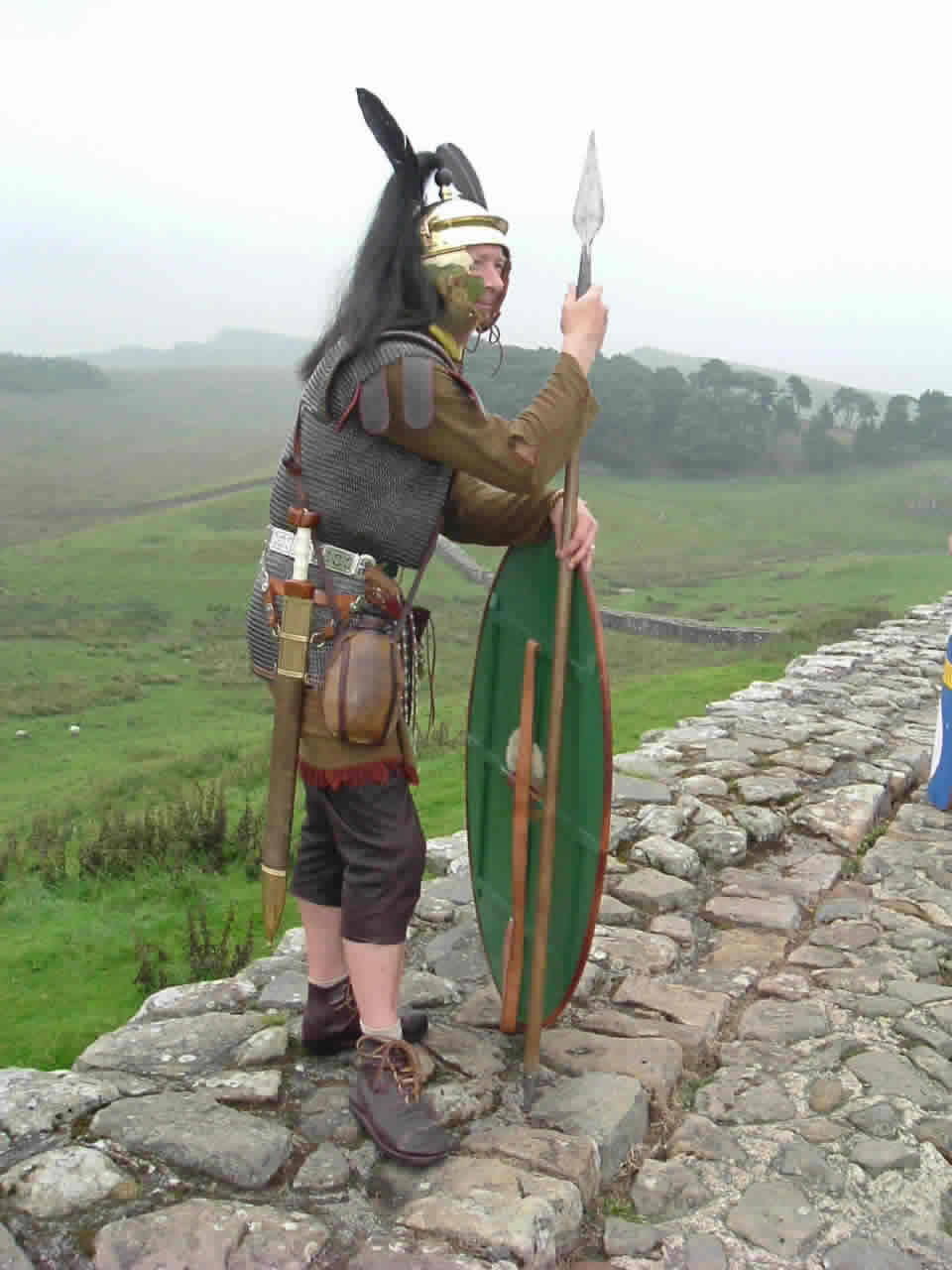
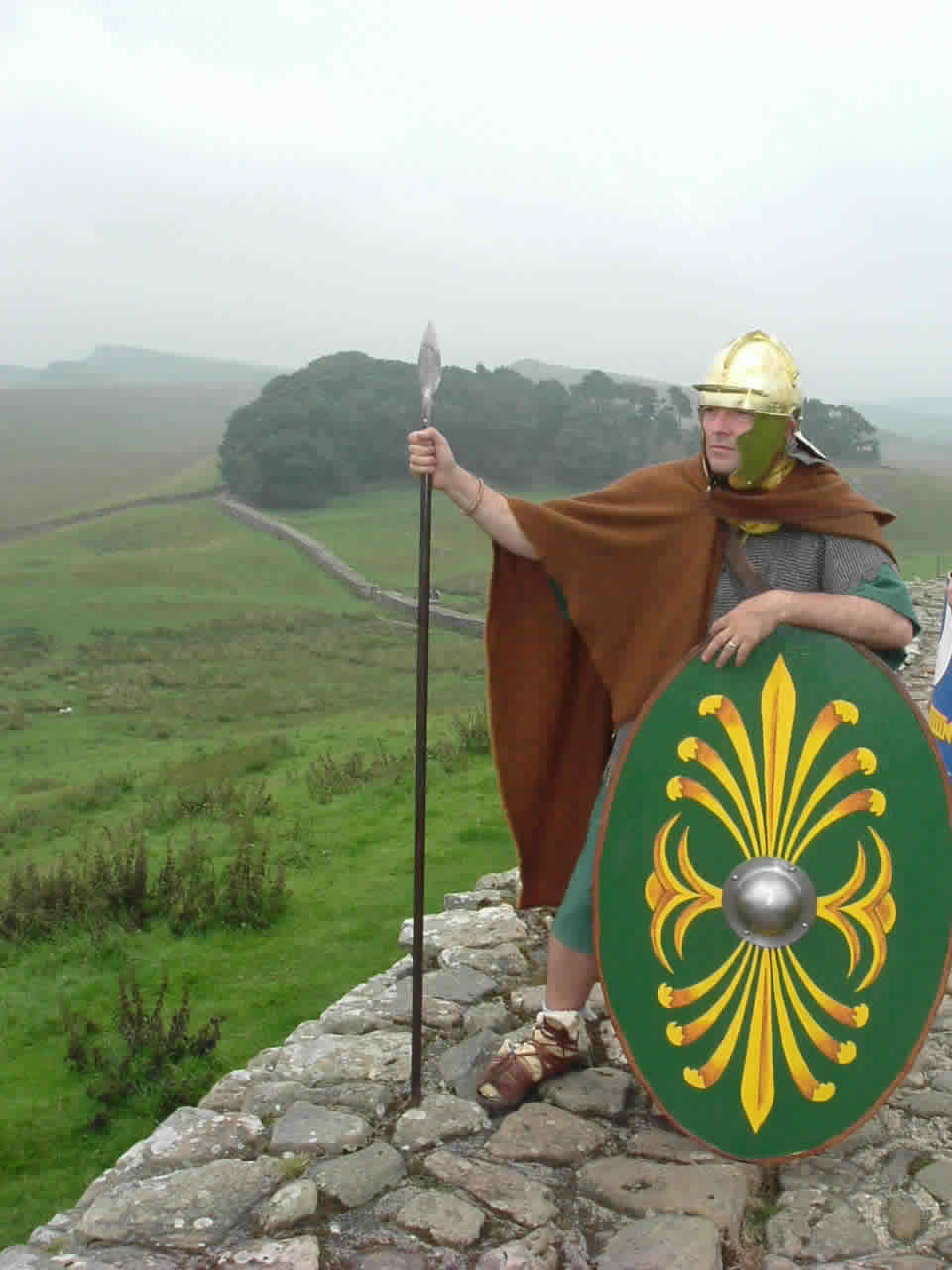
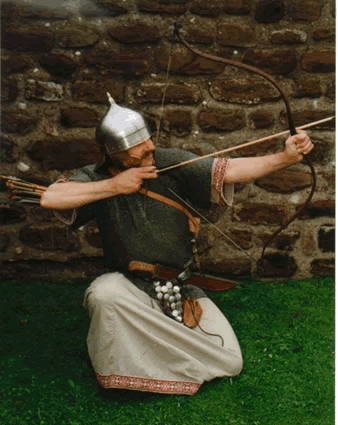
|
Auxilia…
Attached to today’s Fourteenth legion, as in
the Roman past, is a unit of provincial auxiliaries from the lands
around the mouth of the Rhine, the First Cohort of Batavians, Roman
Citizens.
These are often assistedby a Unit of Hamian archers from the far-distant
province of Syria.
From the early days of the Republic the Roman army
had supplemented its strength with auxiliary (literally 'help')
troops. When people think of the Roman Army there is a tendency
to think of the legions themselves and to forget the considerable
contribution made to the Roman war machine by the numerous auxiliary
cohorts that provided vital support in a number of areas.
While the Roman legions were undeniably the most effective fighting
force of their age the Romans themselves had never managed to successfully
develop their military forces beyond the legionary formations. Accordingly
the need for cavalry, archers, slingers and so on was made good
by recruiting non-Roman peoples into cohorts of 500 (quingenaria)
and 1000 men (milliaria). These tended to be one of three
types; light infantry, cavalry and mixed units (equitata)
made up of cavalry and infantry.
Auxiliary troops were levied from the conquered provinces and were
named after the locality of their origination. The period of service
for an auxiliary soldier was roughly 25 years after which time he
could be discharged with a small gratuity and, most precious of
all, a diploma conferring Roman Citizenship on himself and his heirs.
For acts of bravery it was more likely that Citizenship, either
for individuals, or for the unit as a whole, was awarded. Cohorts
and Alae, like the Legions, could be given honorary awards
such as "VICTRIX" or carry an Imperial family name.
Some units for example COHORS I BATAVORVM MILLIARIA CIVIUM ROMANORUM
PIA FIDELIS, or COHORS I FIDA VARDULLORUM MILLIARIA EQUITATA CIVIUM
ROMANORUM could amass many titles.
Auxiliary units lacked the specialised skills and equipment of the
larger legions and were paid proportionately less. Moreover they
tended not to be among the recipients of the large donatives handed
out to the legions and the Praetorian Guard by successive emperors
desperate to retain the loyalty of their troops. However, the Citizen
cohorts (cohors voluntariorum civium Romanorum) thanks largely
to the will of Augustus, were practically on the same pay level
as the Legionaries, and in consequence their commanders bear the
title of Tribunus.
Stationed in small forts along the frontiers the auxiliaries were
mainly used for garrison and policing duties. When major campaigns
were launched against the barbarians massed beyond the empire's
defences, the auxiliary cohorts would be drawn on to provide support
arms for the main legionary force.
Like their comrades in the legions the auxiliary troops were divided
into centuries of 80-100 men commanded by a centurion. The centurions
were as likely as not to be Roman citizens in the time-honored tradition
of empire officers being placed in command of native troops. Such
an appointment might represent a promotion from a one of the legions.
It might be a direct appointment provided under the patronage of
a provincial governor, or even the emperor himself. Certainly many
of the centurions were drawn from the same native stock as the rank
and file. Above the centurions was the commander of the quingenaria
cohort - the Praefectus who was an equestrian officer. The rank
of prefect was a senior one and commanded respect right across the
army. The command of a cohors milliaria or civium Romanorum was
usually in the form of a Tribunus. Command of an auxiliary
cohort was often the reward conferred on outstanding legionary centurions
who had proved deserving of independent command. Attached to today's
Fourteenth legion, as in the Roman past, is a unit of provincial
auxiliaries from the lands around the mouth of the Rhine, the First
Cohort of Batavians, one thousand strong, loyal and faithful citizens
of Rome.
|





